 |
|||||
| Home | Research | For Teachers | HISTORY Level 1 Level 2 Level 3 |
PRINCIPLES Level 1 Level 2 Level 3 |
CAREER Level 1 Level 2 Level 3 |
| Gallery | Hot Links | What's New! | |||
| Web Administration and Tools | |||||
 |
|||||
| Home | Research | For Teachers | HISTORY Level 1 Level 2 Level 3 |
PRINCIPLES Level 1 Level 2 Level 3 |
CAREER Level 1 Level 2 Level 3 |
| Gallery | Hot Links | What's New! | |||
| Web Administration and Tools | |||||

The F-15E "Strike Eagle" is the world's most technologically advanced fighter
and a testament to America's aerospace ingenuity. Built by the McDonnell Douglas
Corporation, it is powered by two Pratt & Whitney F100-PW-229 engines producing 29,100
pounds of thrust per engine. The Strike Eagle is the latest
version of the world's premier air-superiority fighter, the F-15 Eagle. The F-15E combines
the strengths of the previous Eagles with the latest in computer technology providing its
crew with the best avionics, radar, sensors, and cockpit design of
any aircraft flying today.
Specifications: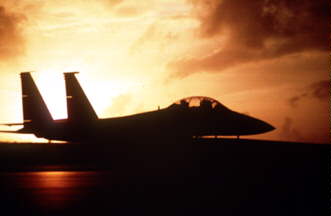
Wing Span: 43 feet
Length: 64 feet
Height: 18 1/2 feet
Engines: two Pratt & Whitney F100-PW-229 engines
producing 29,100 pounds of thrust engine at
full afterburner
Maximum Altitude: greater than 50,000 feet
Maximum Speed: Mach 2.5
Technology and the Strike Eagle:
Technology is synonymous with the F-15E. Pilots, Weapon Systems Officers (WSOs), aircraft
specialists, and crew chiefs assigned to Strike Eagle units are highly trained specialists
with years of training and education. This education starts early in life with a strong
foundation in mathematics, science, and reading skills.
Cockpit Design: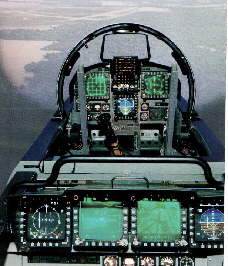
The cockpit design of the F-15E is one reason it is the most versatile and capable fighter
flying today. Seven programmable multi-function displays provide the aircrew with a wealth
of information that no aircraft flying today can match. Most functions can be controlled
by switches on the throttles and the control stick (referred to as “HOTAS” or
Hands On Throttle And Stick). This allows the pilot to control the aircraft’s systems
without having to remove his hands from the aircraft controls (a significant advantage in
demanding phases of flight like an instrument approach in the weather). The programmable
nature of the multi-purpose displays is another outstanding feature that greatly aids the
aircrew. For example, the WSO has four displays available in the rear cockpit. On a night
low-level mission (using the Terrain Following Radar to fly 500 feet above the ground)
most WSOs will have the following information on the displays: Terrain Following Radar,
Heads-Up Display (HUD), Air-to-Air radar, Moving Map display. Since each display is
programmable, the aircrew can program three separate displays on each multi-function
display. Therefore, the WSO can have the engine display (providing the engines
“vital” signs) on the same screen as the Moving Map display. By moving a switch
on the hand controller, the engine display replaces the Moving Map display. Hitting the
switch again returns the multi-function display to the Moving Map (or the third option if
one was programmed).
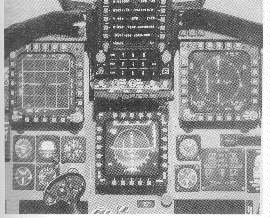 |
Front Office | Tactical Situation Display (TSD) or "Moving Map" Best thing since sliced bread! |
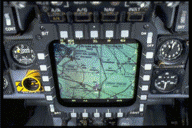 |
| Front Cockpit Stick with "HOTAS" Controls |
 |
WSO checking 9 o'clock |  |
Back Office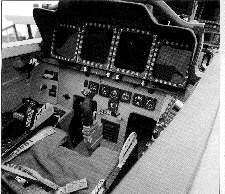
More Photos



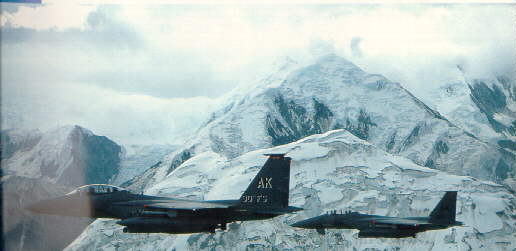
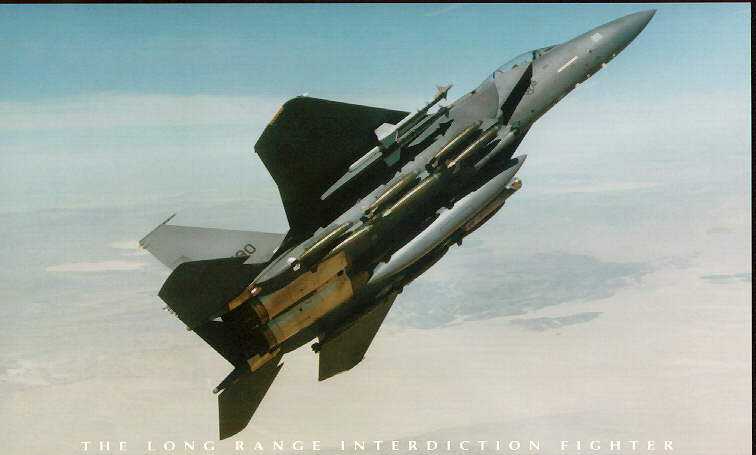
 |
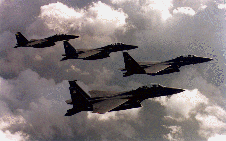 |
Send all comments to ![]() aeromaster@eng.fiu.edu
aeromaster@eng.fiu.edu
© 1995-98 ALLSTAR Network. All rights reserved worldwide.
| Funded in part by | Used with permission From 90th Fighter Squadron "Dicemen" Aviation |
Updated: February 24, 1999